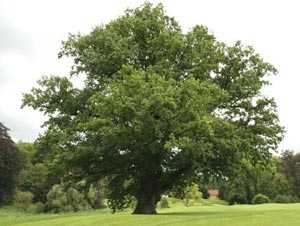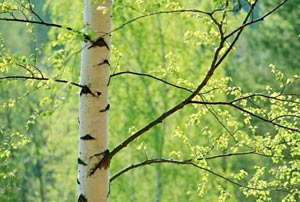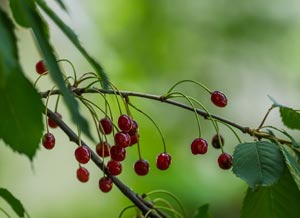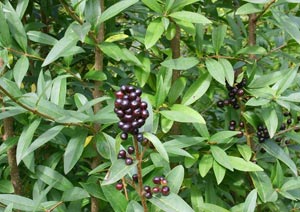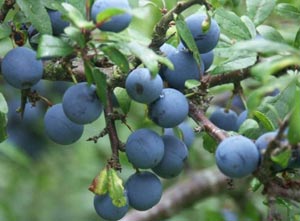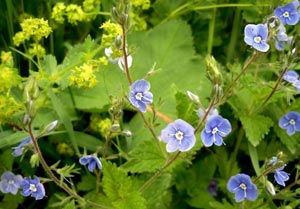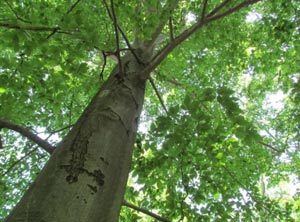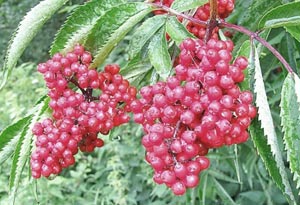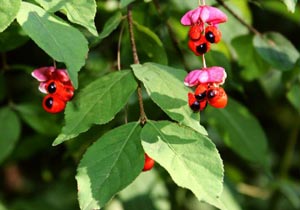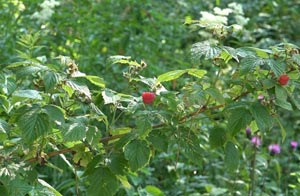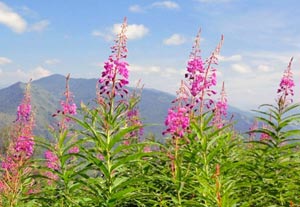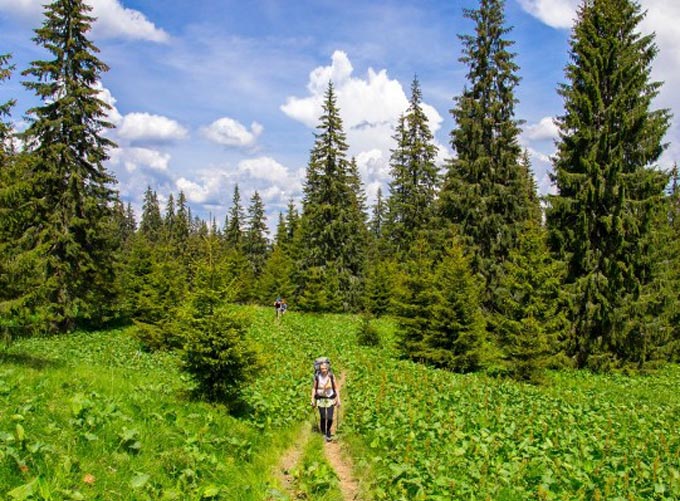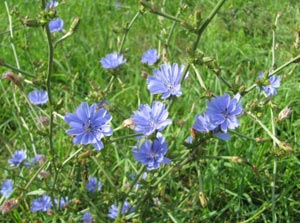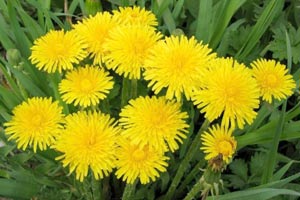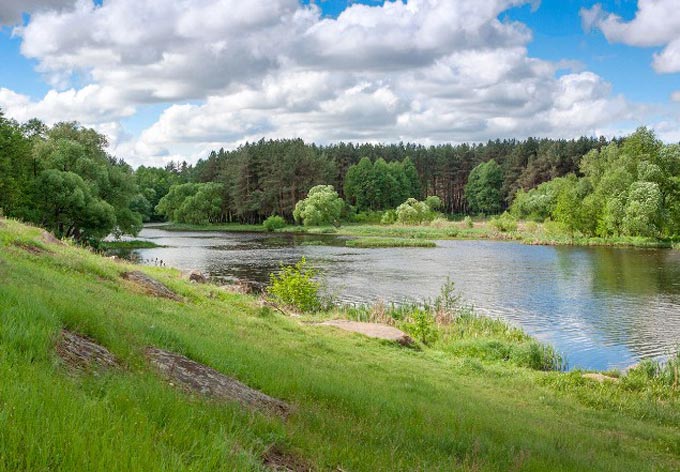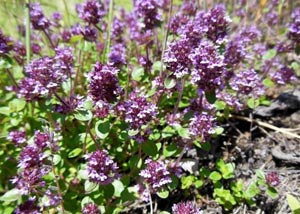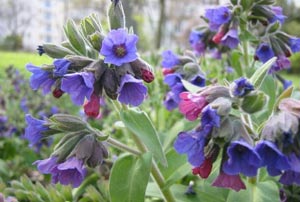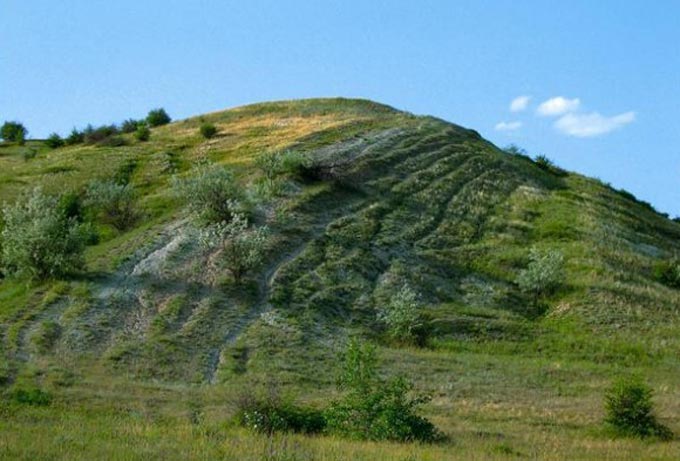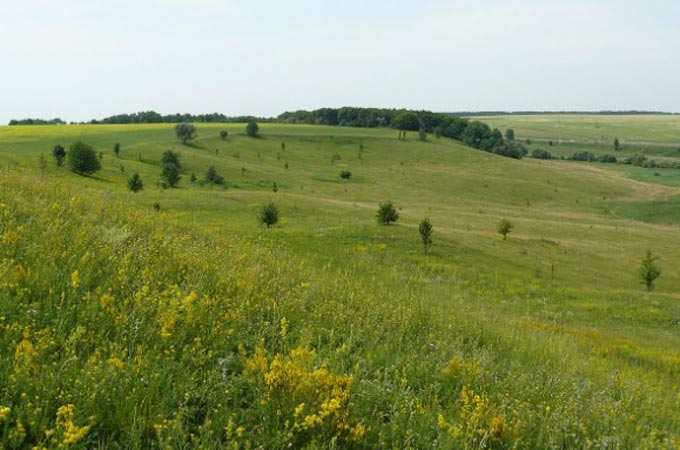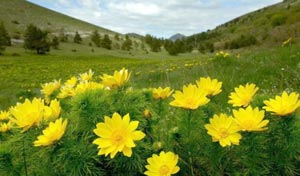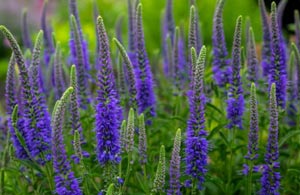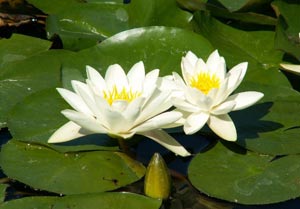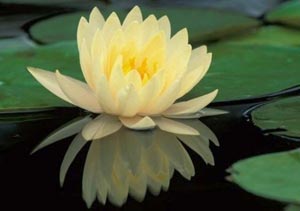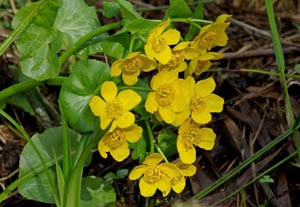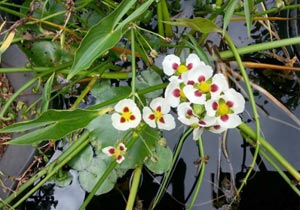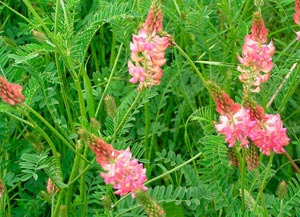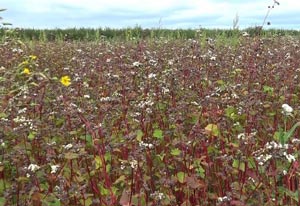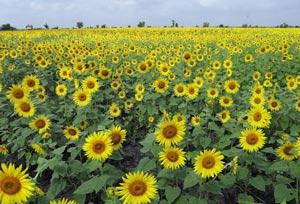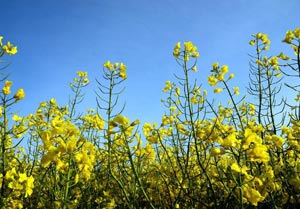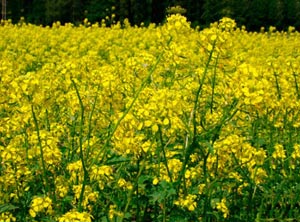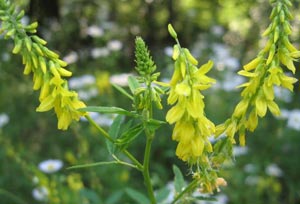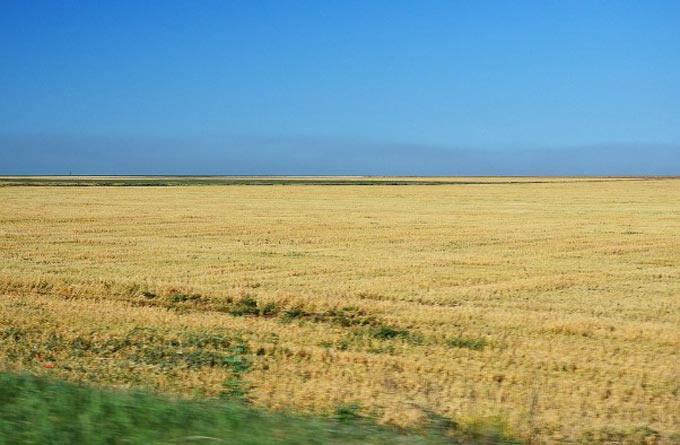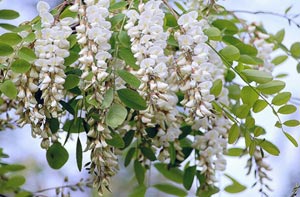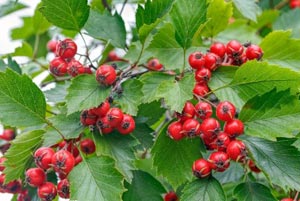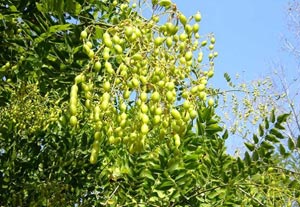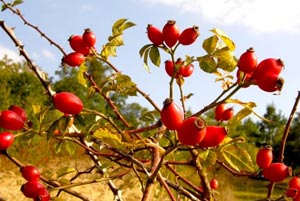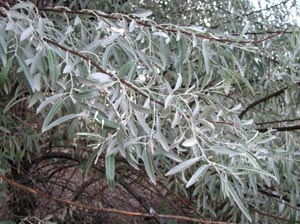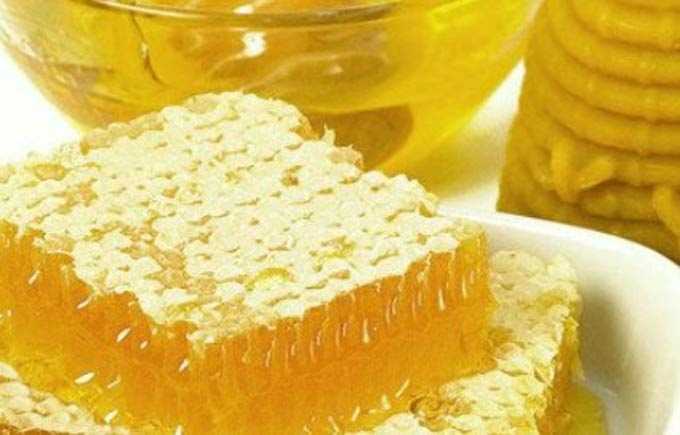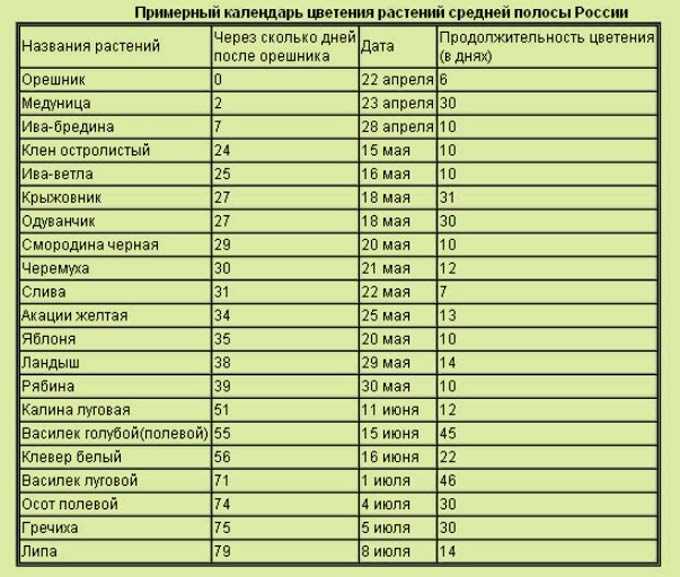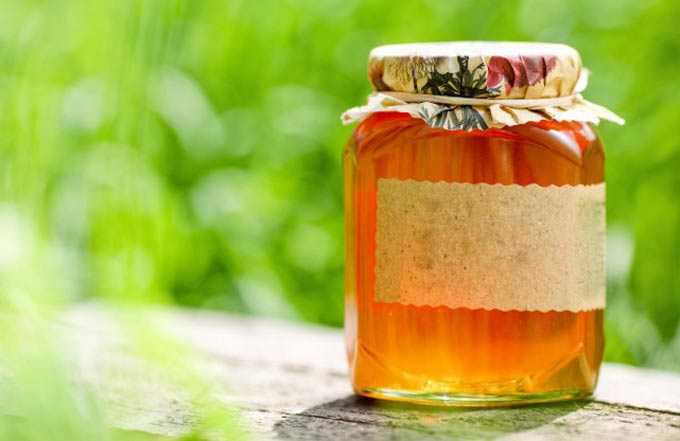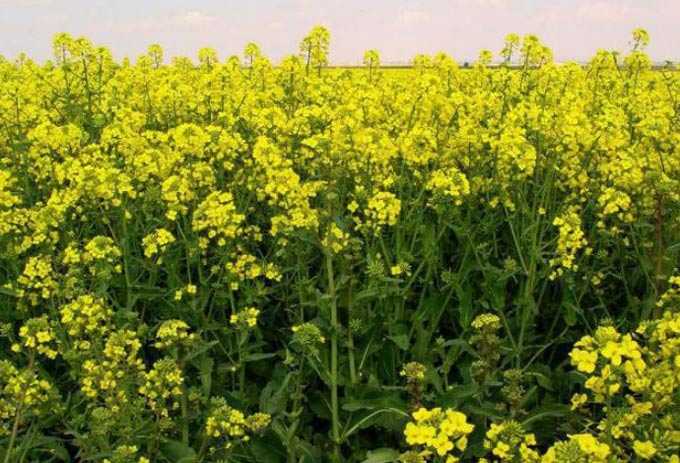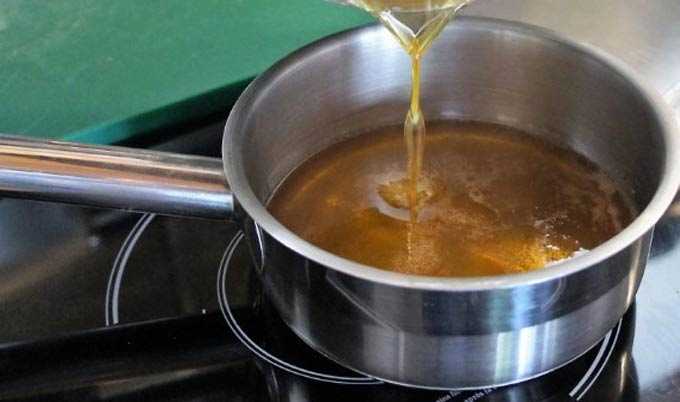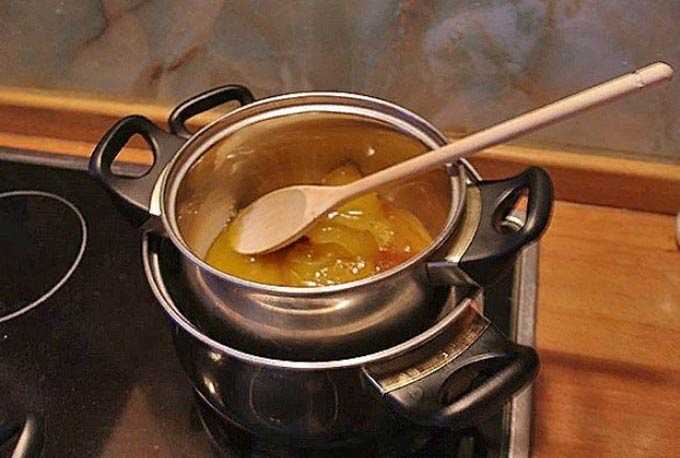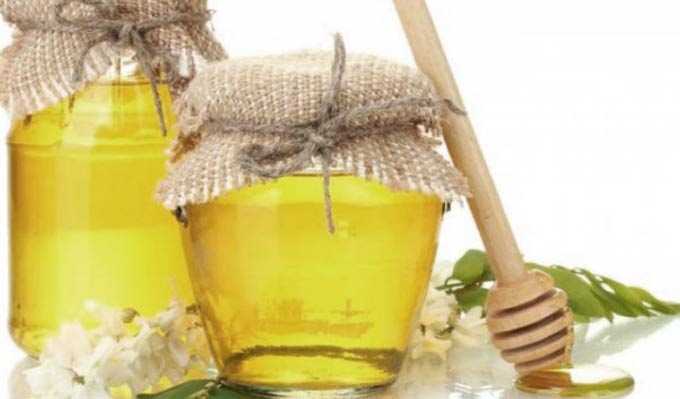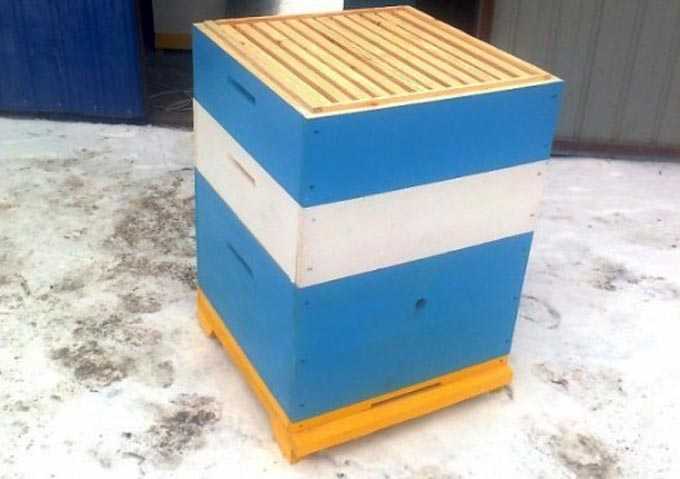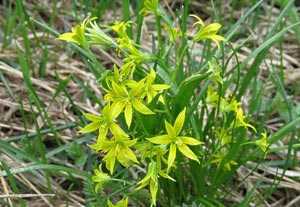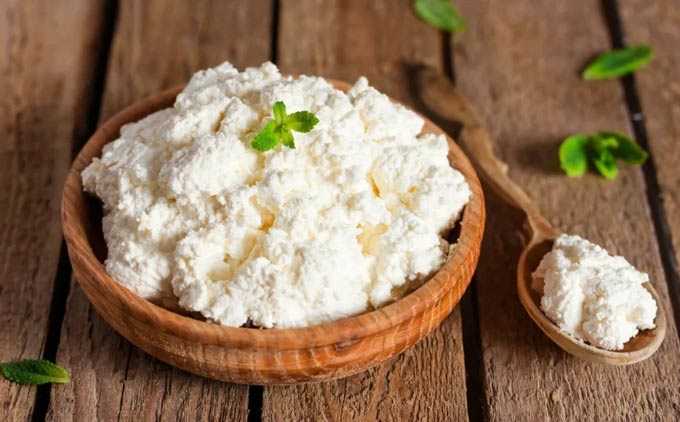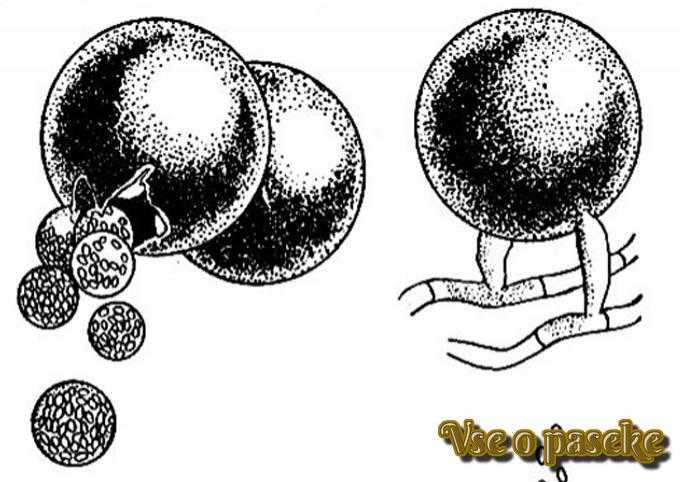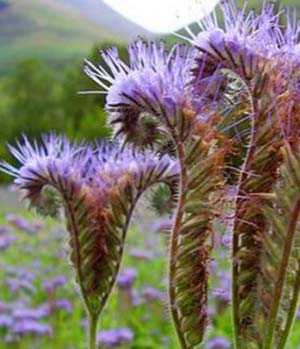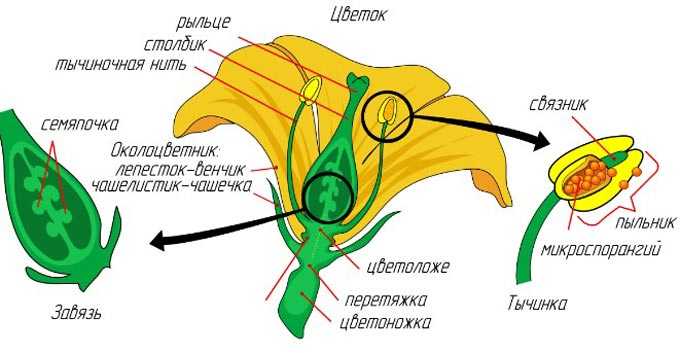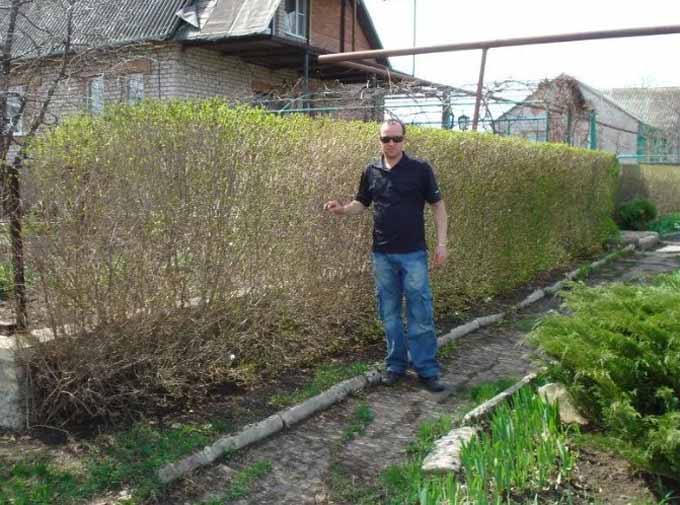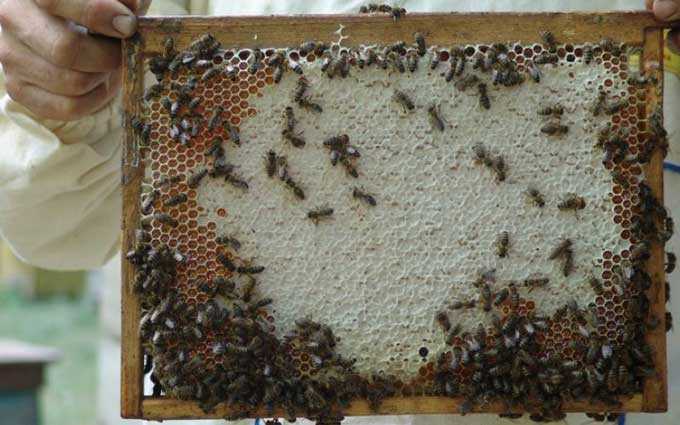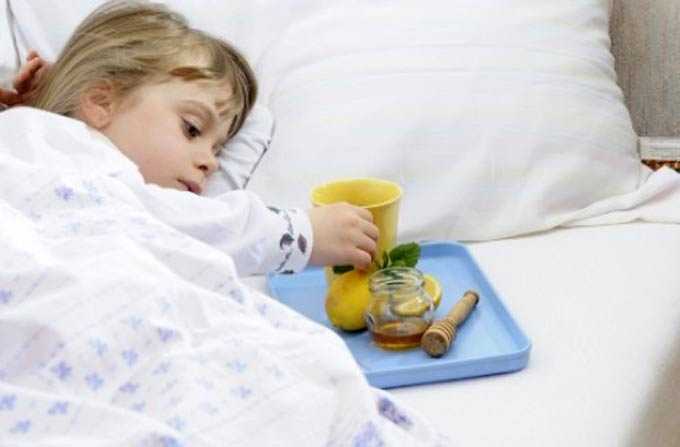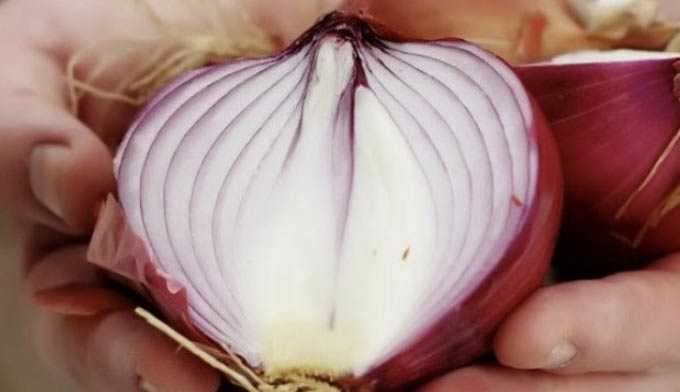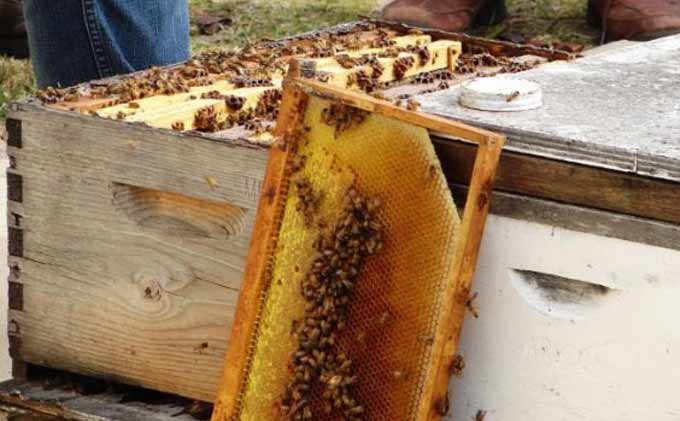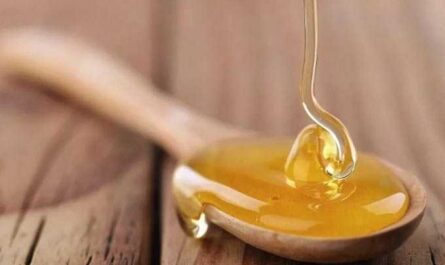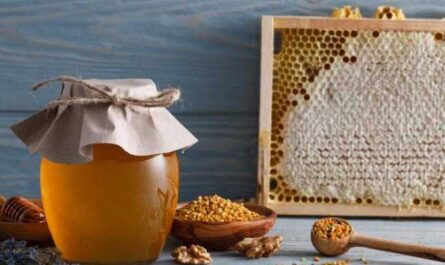The honey plants of Ukraine are conditionally distributed over several zones, which is due to the growth of the temperate continental climate both from west to east throughout the country, and within certain climatic regions. Significant differences are observed in air temperatures, the amount of precipitation and the time of precipitation, as well as in atmospheric pressure.
The content of the article
- 1 Climatic overview
- 2 Division into honey zones
- 3 Overview of the Carpathian melliferous plants
- 3.1 Foothills
- 3.2 Alpine forests
- 3.3 Grasslands
- 4 Overview of Polesie’s melliferous lands
- 4.1 Mixed forests
- 4.2 Deciduous forests
- 5 Overview of melliferous plants of Donbass
- 5.1 Heaps
- 6 Overview of melliferous plants of the forest-steppe
- 6.1 Forests
- 6.2 Grasslands
- 6.3 Arable land
- 7 Overview of the steppe melliferous plants
- 7.1 Forest shelter belts
Climatic overview
The entire territory is divided according to the climate into:
- mountainous region with the Carpathians;
- north with an abundance of forests, swamps;
- south with its steppes;
- and the Mediterranean part (Crimea), now part of Russia.
Read: Honey plants on the territory of Crimea
In the mountain western zone vertical zoning is observed – the transition from forests to alpine and subalpine meadows (polonyna) as you move up. This is the difference between the height above sea level from 150 to 1-600 meters. Winters are cold here, and it often rains during the warm season. Only a zoned breed of bees – Carpathian or Carpathian – can work on honey collection.
South – arid zone exposed to anticyclones. There is little precipitation in summer, the weather is hot. The main honey plants are represented by agricultural crops. In large areas of fields, the hardy Ukrainian steppe bee, adapted to such a climate and stress, works well.
North occupy vast forests and swamps. Here is the real kingdom of wild plants. But beekeepers need to be extremely careful in the northernmost regions, where radiation contamination of territories after the Chernobyl disaster is still observed. This is mainly Polesie.
Division into honey zones
The distribution of honey zones on the map looks a little more complicated than climatic ones. Here are the main areas:
Polessye – northern regions of several regions at once: Chernigov, Kiev, Zhitomir, Rivne and Volyn (divided into the Right Bank and the Left Bank).
Forest steppeoccupying a third of the country’s territory (the zone from the foothills of the Carpathians to the western part of the Central Russian Upland). It includes 17 regions: the north of Odessa and Kirovograd, part of Chernivtsi and Ivano-Frankivsk, the south of Kiev, Chernigov, Zhytomyr, Rivne, Volyn, Lviv, the entire territory of Kharkov, Poltava, Cherkassy, Vinnitsa, Khmelnitsky, Ternopil, most of Sumy.
Donbass in the east of the country – a vast “island” of the forest-steppe among the steppe territories, concentrated on the Donbass ridge.
Carpathians (with the adjacent Ciscarpathian plain) including Chernivtsi, Ivano-Frankivsk, Lviv and Transcarpathian regions.
Southern steppescovering the Zaporozhye, Nikolaev, Kherson and Odessa regions.
Overview of the Carpathian melliferous plants
The Carpathians are an extreme region for beekeeping. The honey harvest is limited here due to the frequent rains. Winters are cold, requiring the transfer of hives to winter houses. Real mountain apiaries are rare, as they need to be placed in the excessively humid subalpine highlands.
Honey plants are distributed according to the vertical zonation – forests are spread in the foothills, and meadows lie higher.
Foothills
Oak forests are located in the foothill zone. They are concentrated mainly on steep slopes and peaks. On the plains, oak groves have been cut down, heavily thinned out, or displaced by beech.
Common oak good spring pollen. Trees bloom at the age of 40 and more. Flowers bloom in May. Pollen is collected from male inflorescences, and from female nectar, but only in good weather.
Maple forms the second layer of vegetation in oak forests. Blooms before foliage bloom (April, May), attracting flying bees. Flowering lasts from 10 to 17 days (weather permitting). Produces both nectar and greenish-yellow pollen. The honey is very light, has a pleasant aroma and taste. An average of 200 kilograms of this product is harvested per hectare.
Birch also included in the second tier. Blooms from mid to late May to June. It is a good early summer pollen. Sometimes bees collect juice from this tree, which is used to produce honeydew honey.
Field elm (popularly “elm”, “birch bark”) – an ornamental tree belonging to the second tier of oak groves. Dissolves small greenish-yellow flowers in April, May before the foliage unfolds. It is readily visited by bees.
Aspen, belonging to the willow family, blooms in late April and early May. Provides bee colonies with pollen. The sticky substance secreted by young kidneys is used to produce propolis.
Cherry from the Rosaceae family, it collects pollen, nectar and propolis glue (honeydew is released in May). Blooms in April, May. Nectar productivity is about 30-40 kilograms per hectare.
Of the shrubs in the oak forests are remarkable:
Common hazel – a large shrub from the hazel family, blooming long before the leaves appear (April, early May). Good pollen production, stimulating queens for spring egg laying.
Common privet – a branched shrub from the oilseed family with flexible yellowish-gray shoots. It is a summer honey plant that blooms in June-July. Average nectar productivity is 40-45 kilograms. Provides mostly supportive bribes.
Cornel) from the turf family – a small tree or shrub that blooms yellow-green flowers in March, early April. Flowering lasts up to 25 days. Bribes of nectar are 50-65 kilograms, and in a favorable, not rainy spring – up to 140 kilograms. The plant is also a supplier of light green pollen and propolis glue.
Hawthorn – a bush or tree from the Rosaceae family. It blooms with white-pink small flowers in June for 10-12 days. Gives up to 80 kilograms of nectar per hectare. The pumped out honey has a slight bitter taste.
Turner – a thorny bush that blooms in April, May. Differs in 5-petal white flowers with multiple stamens. Nectar productivity from 15 to 20 kilograms.
Spring melliferous plants can be distinguished from herbs.:
Oak anemone – tall grass with white large flowers, forming dense thickets. It blooms at the end of April, providing bee colonies mainly with pollen. It is believed that the pollen from this plant is poisonous, but bees willingly work on anemone flowers.
Veronica dubravnuyu – perennial with beautiful lilac flowers, collected in loose brushes. Blooms from mid-May to early July. Honey productivity is 18-20 kilograms. The value of the grass lies in providing the apiaries with a sustaining bribe.
Beech – another common tree in the Carpathian region. Beech forests give way to oak groves at the foothill heights. Trees over 20 years old are blooming. The undergrowth is formed by the same representatives of the flora as in oak groves: hawthorn, thorns, hazel.
Mountain beech forests grow mostly without undergrowth. Birches and lindens are occasionally found here.
More often grow:
Elderberry bushes (ordinary), blooming large greenish-yellow inflorescences. Flowering occurs in May and June. Lasts an average of two weeks. The plant is a good pollen grower. Bush branches are used by beekeepers to scare away mice in winter houses.
Shrubs of warty euonymusblooming in the second half of May for 30 days. The plant is very slow in growth. Its honey productivity is low – about 15 kilograms per hectare. The value for apiaries lies in providing nectar for the period of development of bee colonies.
Grasses are found only in clearings and forest edges. Here grows:
Bear onion (wild garlic), characterized by white inflorescence umbrellas and a fairly high stem. This is an early summer honey plant (May, June), yielding 18-24 kilograms of honey per hectare of dense thickets.
Common loosestrife – a perennial herb with an erect stem and 5-petal yellow flowers, grouped in whorls. Blooms from June to August. The exact honey production is unknown.
The main honey harvest in the Carpathian region is provided by plants that have occupied extensive felling of beech forests.
It:
Wild raspberry – good honey plant and pollen plant, blooming in June. Bribes from him last a month, even if the weather is rainy. Nectar productivity is about 100-115 kilograms per hectare of dense thickets.
Ivan tea (common fireweed) – a perennial herb with a high stem and beautiful loose panicles of pink flowers. Blooms in summer for two months, abundantly emitting pollen and nectar. Nectar productivity from 350 to 500 kilograms.
Alpine forests
Above 900 meters above sea level, there are coniferous forests with a high level of moisture and shading. The undergrowth here is very weak – almost the same as in beech forests.
Spruce and cedar pine grow at an altitude of 1-200 meters, which are mainly pollen-bearing. Below – beeches, yews, hornbeams. The undergrowth is most developed in clearings, burnt-out areas, glades, forest edges. It grows here:
- wild raspberries;
- honeysuckle;
- lingonberry – a small shrub blooming at the end of May with a nectar productivity of up to 20 kilograms;
- blueberry is a low-growing bush showing good honey productivity from 25 to 180 kilograms (in favorable weather years);
- rose hips;
- hawthorn;
- common heather, which has a honey productivity of up to 150-200 kilograms (blooms from July to September).
On dry south-western slopes in the undergrowth there is a bredin willow (goat), capable of providing early commercial bribes in the spring (up to 150 kilograms per hectare of thickets). Blooms in spring before the leaves open for two weeks. The collected honey has a fine-grained structure, golden yellow color, pleasant aroma and taste.
The main honey harvest is in the summer. It is provided by thickets of wild raspberries and fireweed (willow-herb), which have flooded the vast felling of coniferous forests.
Grasslands
Carpathian meadows are subdivided into several zones:
Secondary meadows are formed at the sites of felling of mountain forests, burned-out areas. They are more often used for grazing livestock than for collecting honey. In the first 2-3 years after the destruction of trees, fireweed (ivan tea) and wild raspberries grow well here. Such areas are valuable for apiaries.
Floodplain meadows located near the Tisza, Dniester and their tributaries. Part of the land here is plowed up for cereal crops, part is used as pasture, where the grass is mowed or eaten by livestock before flowering. In places untouched by man, the following wild plants are found:
Horned lily – perennial from the legume family, with small yellow boat-shaped flowers. Blooms in summer, providing bribes of 30-60 kilograms.
Meadow cornflower – perennial from the Asteraceae family, blooming from June to September (on average 40-70 days). The plant is distinguished by inflorescences in the form of single baskets of lilac-pink or lilac-purple color. Nectar productivity is 100-110 kilograms per hectare.
Different types of clover: white (creeping), hybrid (pink), meadow (red)… These are summer honey plants showing different honey productivity – from 20 to 150 kilograms. The most valuable are the pink and white species, giving up to 100-150 kilograms.
Dry (steppe) meadows located on the heights of floodplains, ledges and ridges of plains, lowlands. Here honey and pollen are obtained from wild-growing herbs:
Perforated St. John’s wort – a representative of the family of the same name. The grass is distinguished by rigid, highly branching stems up to 80 centimeters high, golden-yellow flowers. The honey plant blooms in the summer for 25-30 days. Produces mainly pollen. As a nectar plant by bees, it is ignored during the flowering of other melliferous plants.
Chicory – a perennial from the Asteraceae family with blue flower baskets, which blooms for 1,5 months in July-August. In warm and humid weather, it brings honey from 50 to 100 kilograms per hectare.
Medicinal dandelion – an abundantly flowering perennial from the Aster family. Differs in bright yellow inflorescences blooming from spring to early autumn. Bees collect nectar during the period of mass flowering – in May, June. Nectar productivity up to 50 kilograms. The resulting honey is a rich yellow color, crystallizes quickly. Pollen delivery per day can be up to 3 kilograms per control hive.
Overview of Polesie’s melliferous lands
Ukrainian Polesie is 38% occupied by swamps, and 30% by forests. Moreover, the forest zone is divided into two parts:
- coniferous forests on the Right Bank;
- and deciduous forests on the Left Bank.
Previously, the Polissya breed of Central Russian bees was bred here. Nowadays, purebred representatives of this species are practically not found in the Polesie zone.
It should be noted that coniferous forests are of no interest to beekeepers. Bribes are very meager here. Only in young pine forests is it found common heather, providing honey productivity up to 200 kilograms. Each bee colony collects up to 50 kilograms of honey during its flowering period from August to September.
Mixed forests
Mixed woodlands in this melliferous zone are represented by different varieties of young pine forest.
In the south on dry soils thyme-lichen pines growing:
Thyme (thyme), which is a perennial dwarf shrub from the family of the Yaroslavl family. Blooms in late summer (June, July). Inflorescences are pink, lilac-red or light purple. The productivity of nectar is from 40 to 180 kilograms.
Lungwort – spring perennial honey plant, depending on the type, giving from 60 to 100 kilograms of honey. Blooms in late April for 20-30 days.
The main bribe in such a forest occurs at the beginning of summer. Average productivity of honey is 40-100 kilograms. Nectar is produced by herbs: medicinal gusset, Veronica Dubravnaya, river gravilat, yasnotka; as well as shrubs: viburnum, mountain ash, barberry, hawthorn, honeysuckle, mountain ash.
Center and western part of Polesie is occupied blueberry pines… Their honey productivity is about 50-65 kilograms. As the name suggests, blueberries are predominant here – a low shrub from the heather family. Other important melliferous plants are wild raspberries, viburnum, mountain ash, brittle buckthorn, willows.
In the same part of Polesie grow heather pine forestsgiving bribes in the range of 125 kilograms of honey per hectare of thickets. A dense herbaceous undergrowth is formed by heather, lamb, bilberry, lingonberry. Shrubs are also widespread in the forest: bird cherry, elderberry, hawthorn, viburnum, low-growing willows. There are crimson thickets.
Deciduous forests
Deciduous woodlands – generally favorable for beekeeping areas. They provide two main honey harvests in the summer:
- with blueberries, raspberries and buckthorns in May, June;
- from heather thickets in August, September.
Additional collection of honey during non-tipping periods is provided by buckwheat, clover (white and red), and sweet clover.
The most interesting in terms of nectar productivity are heather birch forests growing in the Kiev region. Bribes of honey here reach 100-125 kilograms per hectare.
Stable honey productivity of 40-50 kilograms is shown by:
- blueberry birch forests with an undergrowth of blueberries, lingonberries, brittle buckthorn, rowan, willow;
- aspen-buckthorn forests, where lindens, buckthorns, hawthorns, thorns, viburnum, barberry, rose hips grow.
Overview of melliferous plants of Donbass
As noted above, Donbass is a piece of forest-steppe among the endless steppe territories of eastern Ukraine.
The main problem for beekeepers in the region is the concentration of industrial facilities. But at the same time, there are a large number of nature reserves in Donbass, which contributes to the growth of wild-growing melliferous plants. Steppe reserves near the Sea of Azov are completely covered with a carpet of blooming forbs.
The steppes provide honey harvest for each bee family from 100 kilograms and more. About 1 plant species grow here. The most notable of them are:
- white sweet clover (200-500 kg per hectare);
- sage (400-600 kg);
- bruise (250-700 kg).
Spring in the Donbass steppe begins with the flowering of snowdrops… Behind them, the mother-and-stepmother blossoms, buttercups. In ravines and gullies, hazel begins to give pollen. Further, honey is supplied:
- medicinal lungwort, anemone, dandelions, steppe tulips, willow bredina (April, early May);
- valerian, yellow acacia, thyme, dead nettle, irises (May);
- sage, fireweed, wildflower, cornflower, wild rose, buckthorn, clover (June).
There are forests artificially created by man (Volnovakhsky district), in which they grow:
- white acacia;
- maples;
- ash;
- oaks.
In the wild mixed forests near the Slavic salt lakes, there are thickets of lindens. Apiaries specially roam here to receive bribes from 600 to 1 kilograms per hectare.
On agricultural land, beekeepers will benefit from:
- buckwheat (50-150 kg);
- sunflower (30-60 kg);
- rapeseed (40-50 kg).
Clover, alfalfa and sainfoin collect nectar only when grown for seed. Usually these fields are mown before the flowers appear.
The vast areas of gardens and orchards cannot be ignored. On average, the honey yield on them is about 40-50 kilograms per hectare (cherry plum, cherries, cherries, apricots, plums, apples, pears).
Heaps
There are 1 mines on the territory of the region, near which protective green zones are being created. Here grows:
White and yellow acacia… Seven-year-old acacia thickets provide bribes from 420 to 680 kilograms.
Read: Acacia as a honey plant
Silvery linden – a drought-resistant species that gives honey from 7-10 years of age (about 180-350 kilograms).
Read: Linden as a honey plant
Blackthorn, wild rose, raspberry, dogwood, apricots are also planted near the waste heaps, sweet clover is sown – here it gives an average of 150 kg of honey per hectare.
Overview of melliferous plants of the forest-steppe
Forest-steppe occupies a third of the territory in Ukraine. This is the habitat of the Ukrainian steppe breed of bees.
Beekeeping is widespread here, but bees have to work mainly on agricultural land (they occupy more than 80% of this honey zone). Very few primary meadow steppes and forests have survived.
Forests
Forests play a small role in the formation of the honey base. Mostly pollen and a small amount of nectar are collected here to support the development of bee colonies. Commercial honey can only be obtained from thickets:
- white acacia (it grows, including in many shelter belts of the forest-steppe);
- linden trees (cordial and broadleaf varieties);
- wild raspberries;
- buckthorn;
- different types of maple (field, Tatar, holly).
Secondary forest honey plants are represented in the region by mountain ash, viburnum, and thorns.
Grasslands
Meadows in the forest-steppe are mainly dry lands on watersheds and along the slopes of river banks. Honey plants bloom here from late March to early October.
Honey is collected here:
Dandelionblooming massively in April, May. In some years, bees from this herb can bring up to 12 kilograms of honey per family.
Hypericum perforatum – perennial with bright yellow flowers. It is a summer honey plant, producing mainly pollen. The collection of pollen lasts an average of 25-30 days.
From meadow cornflowersblooming from the second half of summer and blooming until September. The plant also provides the apiary with pollen.
From spring adonis (adonis) herbaceous perennial with yellow flowers that bloom in May for about 25-30 days. The nectar productivity of the plant is about 30 kilograms per hectare.
From spike-shaped veronica – a melliferous perennial plant with spikelets of a bluish-purple hue, secreting nectar throughout the summer. With continuous growth, up to 300 kilograms of honey is collected per hectare.
Lowland and floodplain meadows occupy a smaller area. The river floodplains are boggy – typical bog grasses grow here:
White water lily – perennial grass floating on the water with wide rounded leaves and beautiful snow-white flowers. Blooms in May, attracting bees until mid-August.
Yellow water lily – perennial perennial with broad leaves and yellow flowers that bloom in early summer. According to some data, this honey plant provides bribes of 250-300 kilograms per hectare for the entire flowering period from May to mid-September.
Lowland areas not covered with swamps are overgrown:
A nun – a perennial herb that prefers damp places. Its large bright yellow flowers bloom in April and May. The herb is considered a good pollen. Moreover, all its green parts are poisonous to humans and animals.
Arrowhead arrowhead – perennial, willingly growing on the banks of reservoirs. The grass has white flowers with a bright red core. It blooms all summer long, emitting a small amount of nectar and pollen.
Arable land
Agricultural land is the main source of honey bribe in the forest-steppe. In spring, bee colonies work mainly on pollination of orchards and berry fields, partially collecting nectar and pollen from wild plants and primroses.
The yield of honey from different honey plants is presented below:
- from the woodland (50-72 kg);
- from Norway maple (150-200 kg);
- with willows, including goat variety or delirium (100-150 kg);
- from dandelions (40-50 kg);
- with mountain ash (30-40 kg);
- from white acacia (300-600 kg);
- with raspberries (150-200 kg).
The fields are grown:
Sainfoin sowing (sandy) – perennial from the legume family, blooming in May, June. For 20-25 days of flowering, up to 280 kilograms of honey is brought per hectare of crops.
Buckwheat – an annual from the buckwheat family, blooming in summer for 30-45 days. Sowings of this culture in the Ukrainian forest-steppe are small in the area covered. However, up to 100 kilograms of honey per hectare is collected from buckwheat fields during migration.
Sunflower – one of the main industrial crops of the melliferous zone, blooming in the second half of summer. Bribes from 30 to 60 kilograms per hectare.
Sowing alfalfa – perennial from the legume family with branched stems and compact purple racemes. Blooms in June and July. The productivity of honey is from 30 to 250 kilograms (in irrigated areas).
Rape – an annual oilseed from the cruciferous family. It can be both spring and winter crops. Flowering, respectively, occurs in May and June. Honey productivity is about 40-90 kilograms.
Read: Rape as a honey plant
Mustard – an annual blooming 40-45 days after sowing in spring. Crystallized honey is creamy with a spicy aftertaste. In summer, from 100 to 150 kilograms of honey is collected from mustard.
Read: Mustard as a honey plant
Donnik more often grown in areas near apiaries. This is a classic biennial, blooming in the second season after sowing. Average productivity of honey is 200-500 kilograms.
Read: Melilot as a honey plant
The main harvests in the forest-steppe receive:
- with a mixture of sainfoin and buckwheat;
- with a mixture of sainfoin, buckwheat and sunflower;
- from forest melliferous plants;
- with buckwheat;
- with white acacia.
Moreover, only prepared bee colonies that have gained strength by the end of May can work on acacia. And at one point in this area it is not recommended to contain more than 70-80 hives.
To exclude honeydew toxicosis by the end of summer, all the collected honey is pumped out, and instead of it, sugar syrup is issued until September 15. The fall in the forest-steppe is collected both from trees, shrubs, and from herbaceous plants – thistle, milkweed, corn, nettle.
Overview of the steppe melliferous plants
Almost the entire territory of the steppes is plowed up and used for sowing field crops, including technical ones. The maximum honey yield is obtained by apiaries wandering between fields.
The fields are grown:
- mustard (100-150 kg);
- sainfoin (100-400 kg);
- alfalfa (50-200 kg);
- rapeseed (40-50 kg);
- sunflower (30-60 kg);
- donnik (200-500 kg);
- melons and gourds (35-50 kg).
Forest shelter belts
To protect the fields from weathering, special strips of shrubs and trees are created. It grows here:
White acacia, which spread throughout the region and also formed wild thickets. In some areas, the tree provides an early summer bribe of marketable honey. The yield of honey per hectare of dense thickets is from 300 to 600 kilograms. Strong bee colonies easily bring 60-80 kilograms of nectar in two weeks of flowering.
Hawthorn – a thorny bush that blooms in May and June. There are two known species of this plant that provide honey and pollen flow.
Read: Hawthorn as a honey plant
Sophora Japanese Is a drought-resistant tree that gives off nectar even in non-rainy summers. It is a late summer honey plant (July, August). Gives from 200 to 250 kilograms of honey. True flowering begins in trees from the age of 30.
briar – a representative of the Rosaceae family. It is a thorny bush covered with reddish-brown bark, with pale pink flowers blooming from June to August. The plant is a good pollen.
Gledicia Is a thorny member of the legume family that blooms in June shortly after acacia. Provides bribes up to 250 kilograms.
Read: Gledicia as a honey plant
Among wild plants, the beekeeper is interested in:
Silver goose – a shrub plant covered with thorns. It blooms in late May, early June, providing honey harvest up to 200 kilograms.
Read: Loch as a honey plant
Sharp-leaved willow – early spring melliferous plant, emitting flower buds long before the appearance of the first leaves (in March, April). Gives 100-120 kilograms of nectar.
Read: Willow (willow) as a honey plant
Meadow and pasture grasses include dandelions and white (creeping) clover.
The flowering calendar of melliferous plants in Ukraine will differ depending on the melliferous zone and the area within this zone. Therefore, it must be compiled on an individual basis.
You can read how this is done here: Flowering calendar of melliferous plants
Roughly the first to bloom is the mother-and-stepmother. This is followed by lungwort, hazel, dandelion and river gravilat. Further, garden trees and acacia bloom inflorescences. The second half of spring, early summer is the period of blooming of wild radish, clover, meadow geranium, raspberry, cornflower. Midsummer is the time of flowering of sweet clover (both species), sainfoin, alfalfa, fireweed (willow-herb), sage, lindens. This is followed by the collection of honey from field crops, including sunflower. After that, in most regions, the main bribe ends.
